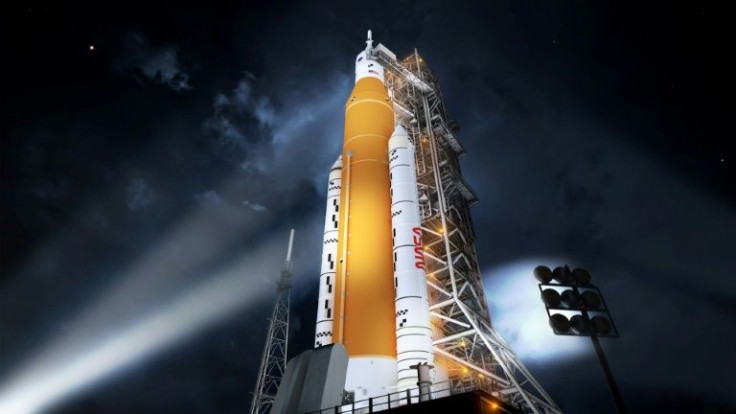Artemis Countdown Continues After 3 Lightning Strikes Hit Launch Pad
KEY POINTS
- Lightning strikes hit the lightning protection system at Launch Pad 39B
- Engineers confirmed the strikes were of "low magnitude"
- The two-hour launch window opens at 8.33 a.m. ET Monday
The Artemis I mission is on and the countdown clock is still ticking even after three lightning strikes hit the launch pad.
The Kennedy Space Center in Florida witnessed rain and thunder just days ahead of the Artemis I launch. Three lightning strikes ended up hitting the lightning protection system towers at Launch Pad 39B – two of them struck Tower 2, while one hit Tower 1, NASA said in a blog post.
These 600-foot-tall towers were intended to lure the lightning currents away from the rocket, NASA explained. In a stunning photo shared online, one can see the rather intense weather conditions at the site.
Lightning strikes next to Launch Complex 39B at Kennedy Space Center a few moments ago as NASA’s Space Launch System rocket and Artemis I await their Monday launch during a two-hour window opening at 8:33 a.m. EDT. pic.twitter.com/UsfBX1Q2u8
— John Kraus (@johnkrausphotos) August 27, 2022
Initial data showed the lightning strikes were of "low magnitude." In an update, NASA noted that the countdown is still on after overnight engineers evaluated the situation and confirmed the strikes were, indeed, of low impact and had "no impacts" on the Space Launch System (SLS) or Orion spacecraft.
Time check: 12 hours to launch #Artemis to the Moon!
— NASA Artemis (@NASAArtemis) August 29, 2022
According to the agency, showers continue to be the "primary weather concern" for the launch. But the U.S. Space Force Space Launch Delta 45 predicted an "80% chance of favorable conditions" at the opening of the two-hour window for the launch, which starts at 8.33 a.m. ET Monday.
Those interested can witness the historic launch on various channels, including the NASA Livestream on YouTube.
🚀One rocket. One mission. Many ways to watch #Artemis I launch to the Moon.
— NASA (@NASA) August 27, 2022
See the thread for simulcasts, including how to watch in 4K. Pick your favorite, set a reminder, and spread the word.
The two-hour launch window opens at 8:33am EDT on Aug. 29. https://t.co/D9RaNE9Gfq
People can use the hashtag #NASAMoonSnap and post photos, songs, nail art or even recipes inspired by the Moon. "The sky is not the limit!" for this challenge, the agency said.
Artemis I is the uncrewed flight test of the SLS and Orion, which will take them past the Moon and back again. Apart from testing these important systems for future Artemis missions, its aim is to inspire the next generation of explorers.
The agency even surprised a group of young students with a special glimpse of the rocket.
"Best day of my whole life. Ever." We surprised students visiting @NASAKennedy with a close-up view of the @NASAArtemis I rocket and spacecraft that will fly to the Moon. These are the faces of the #Artemis generation. pic.twitter.com/z6nF5APk4Q
— NASA (@NASA) August 27, 2022
"The first in an increasingly complex series of missions, Artemis I will pave the way for long-term lunar exploration, providing the foundation for extending human presence to the Moon and beyond," the agency noted.

© Copyright IBTimes 2024. All rights reserved.






















